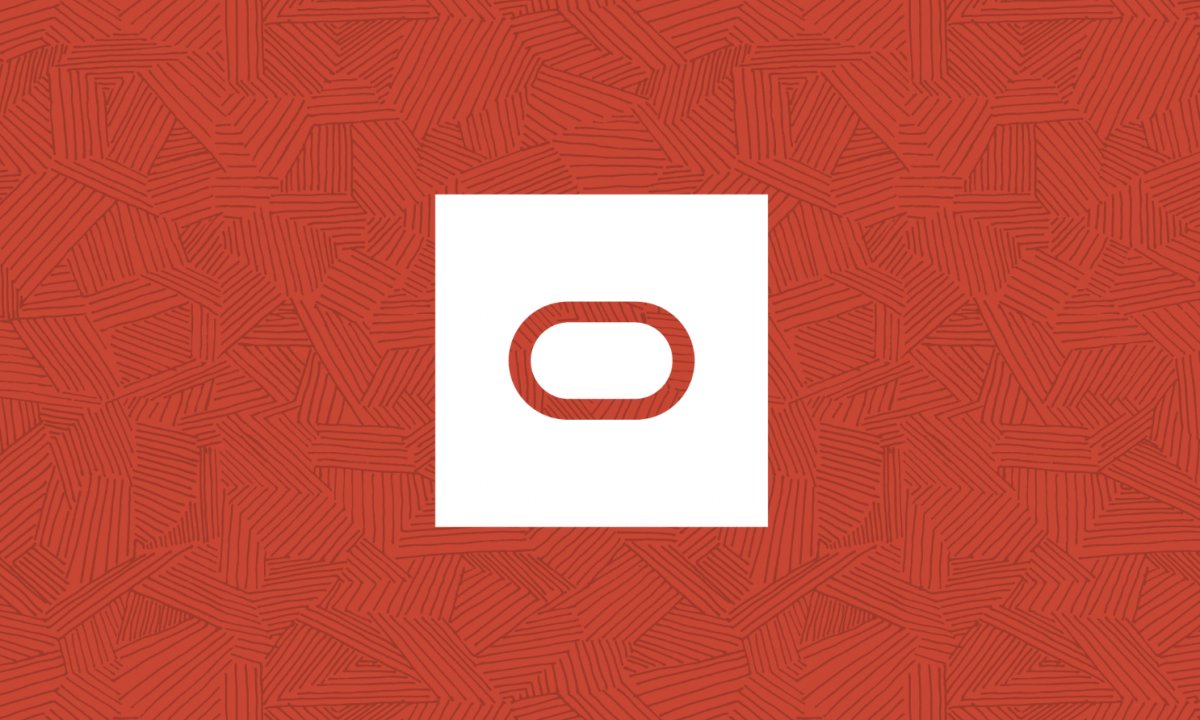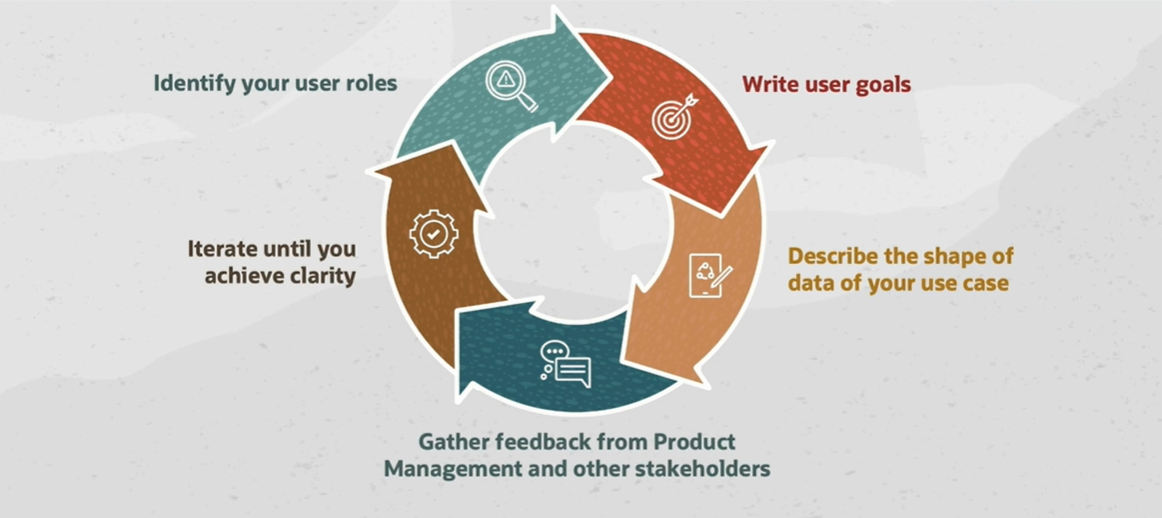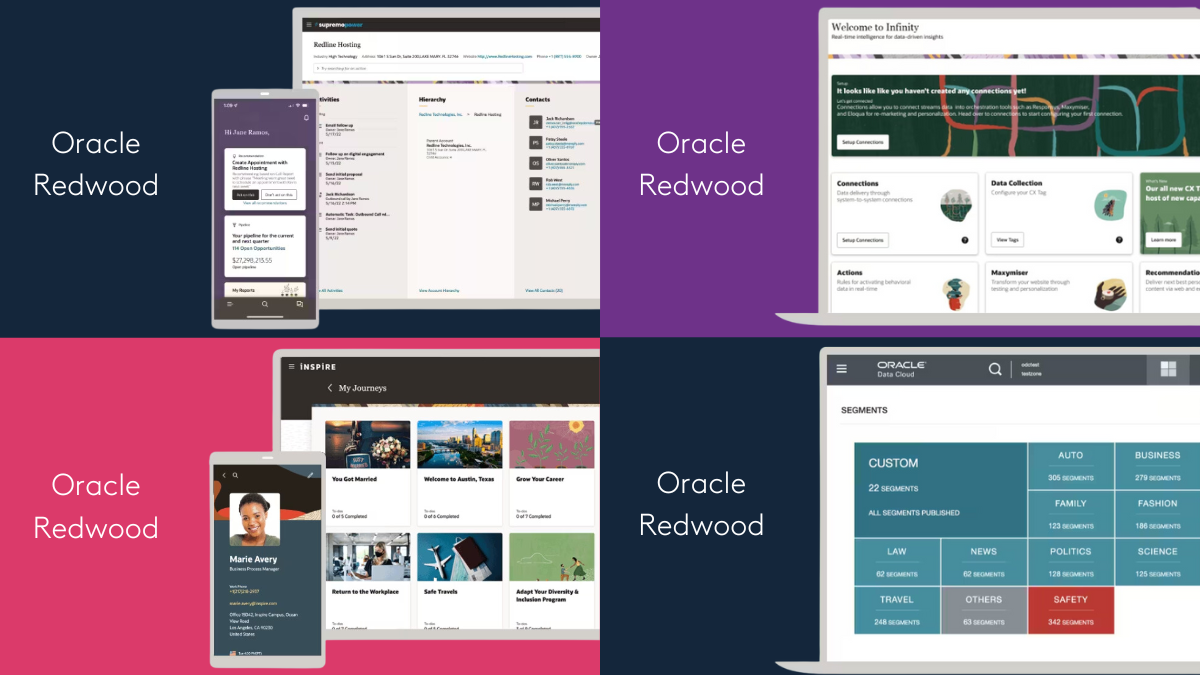Case Study
Crafting Excellence: Smeg’s Innovative approach to Customer Service
Learn how Smeg delivers excellent customer service by leveraging Oracle's Generative AI...
3 min read

Author: Dan Raper
7 min read
Anyone who works with Oracle products might recognise the name "Redwood" and associate it with Oracle's new brand identity, visible across their websites and increasingly as the UI framework of choice in their Fusion Cloud products. However, Oracle's Redwood initiative encompasses a great deal more than a rebrand, or even a UI framework - it is a design philosophy rolled up into a holistic enterprise software delivery methodology.
Excitingly for us as partners, Oracle Redwood gives us all the tools and processes we need to blend our own extensions and custom features seamlessly with Oracle's out of the box Fusion products. The result is very much having our cake and eating it - the best of Fusion Cloud right alongside our own user-centric design and development practices in a coherent and recognisably "Oracle" user experience.
Enterprise UX is part of Boxfusion's DNA, so we were keen to get involved in Oracle's "Race to Certification" for Redwood this summer. In the words of our own site, we have a longstanding commitment to user-centricity in enterprise software delivery:
“UX design takes a holistic and user-centric approach to building online experiences, taking into account every touchpoint a user has with the provider of a product or service. The objective of the process is to design a system that offers a great experience to its users, while ensuring the end result delivers on its business objectives.”
Redwood allows us to deliver on this promise, while retaining a seamless experience with the OOTB product – properly done, you can’t tell where the Fusion app ends and the custom extensions begin.
How does it work?
While it’s a dramatic simplification, we see Redwood as a framework of two key processes – one for design, and one for development.
The Redwood Design process is inherently user-centric, challenging the implementer to redefine the solution in the user’s terms. What tasks are they trying to complete? What goals are they trying to meet? We can then map those user tasks and journeys out against the information architecture of the solution (the “shape of data”). Closely aligning with our own approach, this first key step in building empathy and understanding of end-users forms a foundation for generating ideas and solutions, typically in the form of interactive wireframes we can share with users and stakeholders to garner insights, drive feedback and ultimately iterate the design into something which works for the users and the business alike.

The Redwood Pattern Book and Design Toolkit together provide the guide and the tools for bringing these ideas to life in the Redwood Design System; the former provides well-researched user journey templates for a large number of use cases, while the latter provides high fidelity design assets featuring both meso-level journey templates and micro-level, atomic UI components to enable rapid design, user testing and iteration. Even better, it’s all provided in Figma, which has been our choice of wireframing tool for some years now.
While there is admittedly something of a learning curve to familiarise yourself with the various templates and patterns - understanding how best to apply each to a given use case - ultimately the result is an unparalleled ability to rapidly generate and test ideas with users to get the all-important insights needed to solve for UX challenges.
Once we reach that magic point of consensus, the question is how to make the designs a reality in software – and this is where the Redwood Design System really becomes Oracle’s love letter to its partners and implementers. Each and every journey template, page layout and UI control in the design system, from the loftiest assisted search pattern to the humblest checkbox element, finds its equivalent template or component in Oracle’s Visual Builder framework – literally ready to drag-and-drop into an app or extension. Seamless integration with the Visual Builder Studio platform provides best-in-class developer experience, through initial setup and version control, through project and bug management to eventual packaging, deployment and release, whether you are building extensions to Fusion Apps or standalone mashups using data from Fusion and external sources.
We’ve used Visual Builder on client projects for some time at Boxfusion, both to extend the functionality of Fusion Cloud applications and for standalone apps or features. While we’ve become used to the accelerators it provides, particularly in superbly surfaced REST endpoints to Fusion Cloud data, the addition of the Redwood System to the mix lifts the capabilities of an expert developer to another level, with an ease of use in line with what you’d expect from modern web development tools.

Accelerators, not shortcuts
A lot of legwork in UX projects typically goes into UI patterns, responsivity and accessibility. Users don’t care whether their data comes from Fusion Sales or HCM - they just expect a seamless journey through their task with as little friction as possible, regardless of the backend platform they are accessing or the device they are using to access it. It’s also crucial for those with visual or motor impairments who may be users of assistive technologies to be able to complete their tasks just as easily.
Taken together, time on these essential tasks can increase project duration and cost – sometimes even driving organisations to consider dropping user experience concerns from their projects wholesale.
In our experience working with the UK Government (and indeed other publicly-funded bodies and charities) we have seen first-hand how valuable a well-researched and robust design system can be when delivering enterprise solutions. In particular the GOV.UK Design System frees up designers and developers to engage with activities like research, testing and iteration, in full knowledge that the design system they are using is usable (think best practices like “recognition, not recall” and internal consistency) and is accessible, meeting the UK minimum requirement for WCAG 2.1 compliance at AA level.
Additionally, at Boxfusion we advocate taking a mobile-first approach to design for the best possible user experience – though this comes with the necessary overhead of scaling through progressive enhancement or even targeted design for larger form-factors.
The Redwood Design System meets these needs impeccably, with responsivity and accessibility built into every template and component both in the Figma design assets and the UI framework within Visual Builder. The components are well-researched, consistent and responsive, with the same framework used to build the Redwood Fusion Apps available to every implementer of extensions or standalone apps. This dramatically reduces the time designers and developers need to spend on these vital but time-intensive tasks, allowing project teams to focus on designing and delivering for our end-users.

Why are we so excited about this?
At a simplistic level, Boxfusion as an organisation are committed to bringing user-centricity into enterprise software delivery. We believe, and have experienced first-hand, that building understanding of your end-users leads to more successful projects – so the fact that Redwood as a philosophy and as a delivery framework aligns so closely with our own values and processes is an exciting prospect for us as Oracle partners.
Our value proposition isn’t just about UX; we are not a design agency or a web development house. We add value by alloying our user-centric research and design skills with deep technical expertise in Oracle’s Cloud products, helping our clients get the very most out of Oracle’s software and solving challenges for their users where necessary. Redwood empowers us to do exactly that at a scale and pace previously impossible – through the design and development accelerators it offers, we can focus more time on understanding users and iterating faster towards the ideal solution, and even bring user-centric techniques to bear in projects with tighter budgets or timelines than would previously be possible.
As I was studying for the Redwood implementer certification, I ran a little test in our internal environment to see how long it would take me to develop a Redwood Figma design – I found that for a simple use case, I was actually able to develop the real thing in less time than it took me to create the interactive wireframe.
As if that wasn’t enough, we can now achieve all this with a recognisably “Oracle” user experience – one which is seamless both across the Fusion stack, and the extensions and apps we create for clients.
How do I get Redwood in front of my users?
Ultimately, it depends on which Oracle SaaS product (or products) you are using. Boxfusion have already helped customers on Fusion Sales reap the benefits of Redwood with improved process times, and have begun helping Fusion Service and HR customers at the time of writing.
While there are some technical steps to take for existing customers, this is nowhere near a full “migration” in nature – however, while it may be easy to switch Redwood on, we’d encourage customers to take this opportunity to pause and look at their processes through a user-centric lens. Whether your focus is on time-per-task, data quality or even adoption rates, taking the time to review your processes with an eye on user experience can pay dividends.
Learn how Smeg delivers excellent customer service by leveraging Oracle's Generative AI...
3 min read
Enterprise UX Series-2nd Edition
1 min read
Enterprise UX Series-1st Edition
2 min read